Yes, we're Canadian, so we celebrate the Thanksgiving weekend a bit earlier than our neighbours to the South. Thus, we won't be in on Monday the 8th. But our website will always be here! Have a good Columbus Day down there!
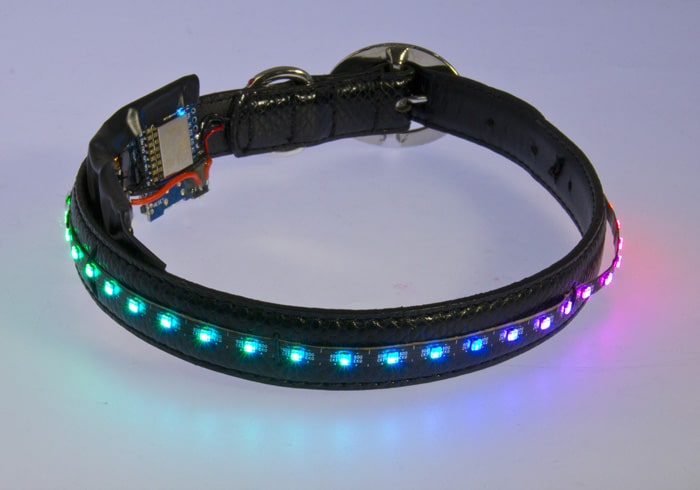
APA102-2020 MicroNova Custom LED Choker
I created this choker as a project to demonstrate the new MicroNova APA102-2020 LED strips.
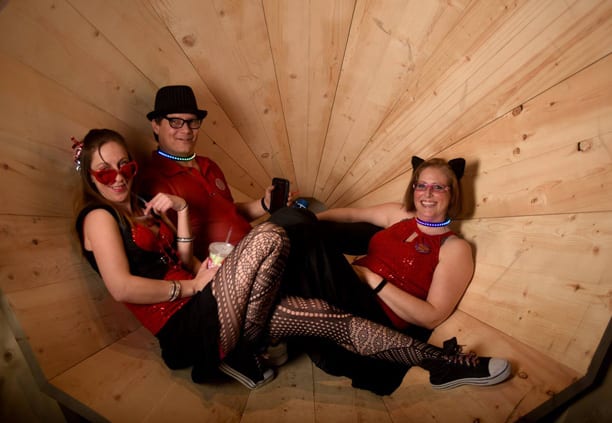
Photo by Yeti, edited by Batgirl
These addressable LEDs are extremely small, less than 1/4 the size of a standard 5050 LED.
This project was built using engineering sample standard MicroNova 99 LED / meter strips . The MicroNova strips we are selling have 198/meter - twice the density!
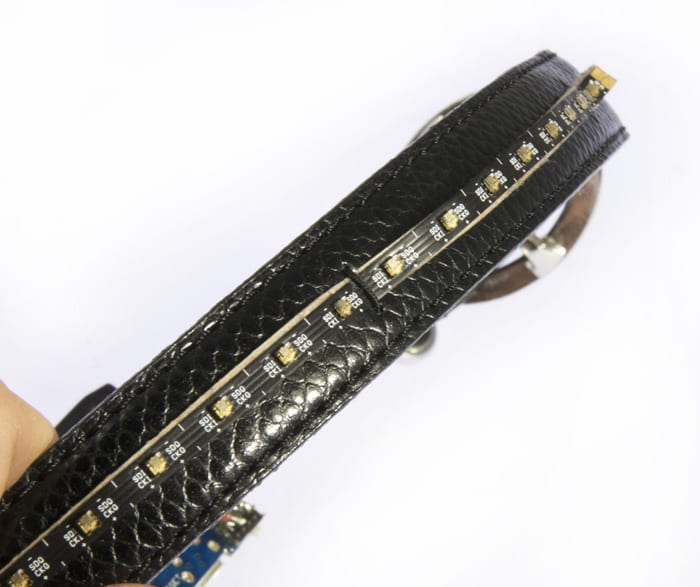
Reason for a Choker necklace:
Hats have been done, shoes have been done, pendants have been done. This is something new for a Valentine’s dance costume, so I decided to go with a choker design. I also wanted something that was interactive, something that would add another layer of WOW to just lighting.
The Build:
I used a Wemos D1 Mini development board along with a boost-converting battery shield for the Wemos D1.

The battery shield was a particularly good choice here because the MicroNova LEDs should be supplied a solid 5VDC. This board boosts the battery voltage to 5V, and then the Wemos D1 Mini bucks it down to 3V3 for it's own operation.
A mini SPDT Slide switch toggles the power from the battery shield to the D1. This allows charging the battery using the battery shield USB connector while not powering the D1.
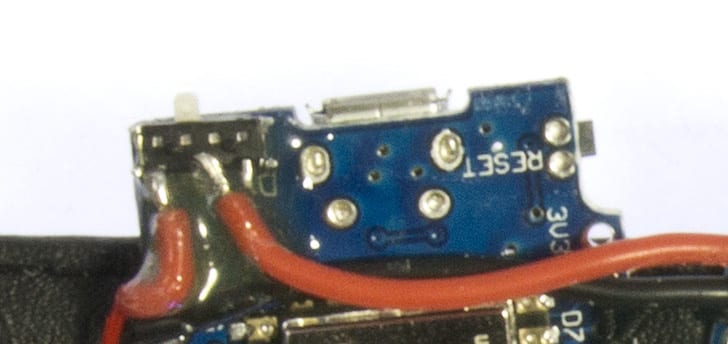
Epoxy locks the switch and wires in place.
The battery used is a conveniently handy older 450mAh Lithium Polymer. Depending on the lighting mode, this battery can power the necklace for a couple of hours.
I used elastic thread to attach the LED strip and components to the necklace. A heavy duty needle was all that was needed to punch through the (imitation) leather belt. Because the thread was elastic and tied under tension, it held the MicroNova strip well in place.
Operation:

When the choker powers up, it creates a WiFi Access Point called "HeartBurnChoker1".
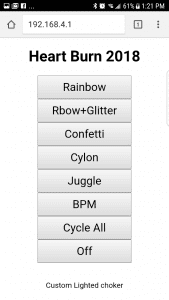
Once I connected to this WiFi, I opened a browser and went to 192.168.4.1. The control interface is simple, but effective. The D1 Mini has more than ample power and speed to effectively drive these LEDs. The MicroNova features separate clock & data lines, so even relatively slow I/O (like Raspberry Pi) can still make it work.
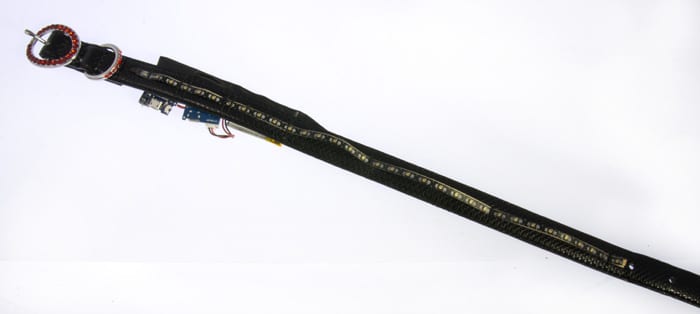
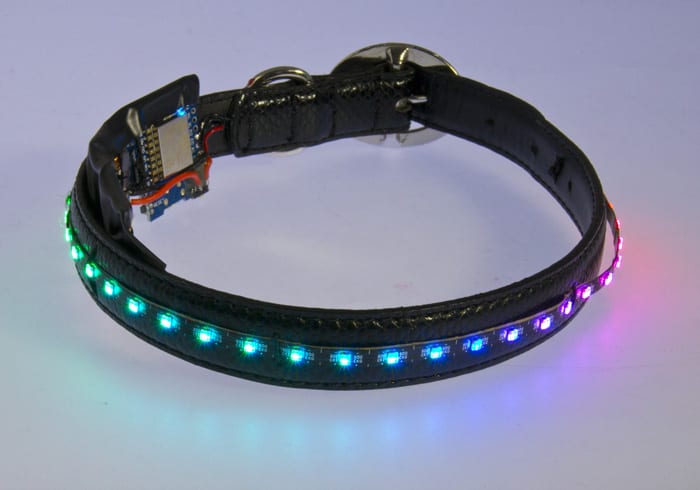
Video of the Collar in Action
MORE POSTS
Wireless doorbells have a tendency to... suck. I speak from personal experience on such matters. When they fail to get my attention while at home, apathy generally wins out and inevitably forces me to head down to the FedEx/UPS depot to pick up my missed package. David Watson, a man of action, took matters into […]
Wheee! It's finally outta my hair - the Sumovore PIC Brainboard now available to all you microcontroller fans that insist on programmable robots. Complete with a 5 pin and RJ11-6 port, you can use practically all PIC programming tools and hardware (or build your own programming cable as detailled in the instruction) to put your […]
Halloween is upon us, and it looks like everyone is testing out their costumes. For instance, the trees are dressing up (or down?) as Naked Trees, and all the leaves are dressing up as Multicoloured Dead Leaves. It's all very exciting. But we've keeping our heads down and churning out some great stuff to show […]
Solarbotics, Ltd. is not responsible for misprints or errors on product prices or information. For more information, please see our Terms and Conditions.
Warning: This product contains chemicals known to the State of California to cause cancer and birth defects or other reproductive harm.
Please visit www.P65Warnings.ca.gov for more information. This item was manufactured prior to August 31, 2018.

